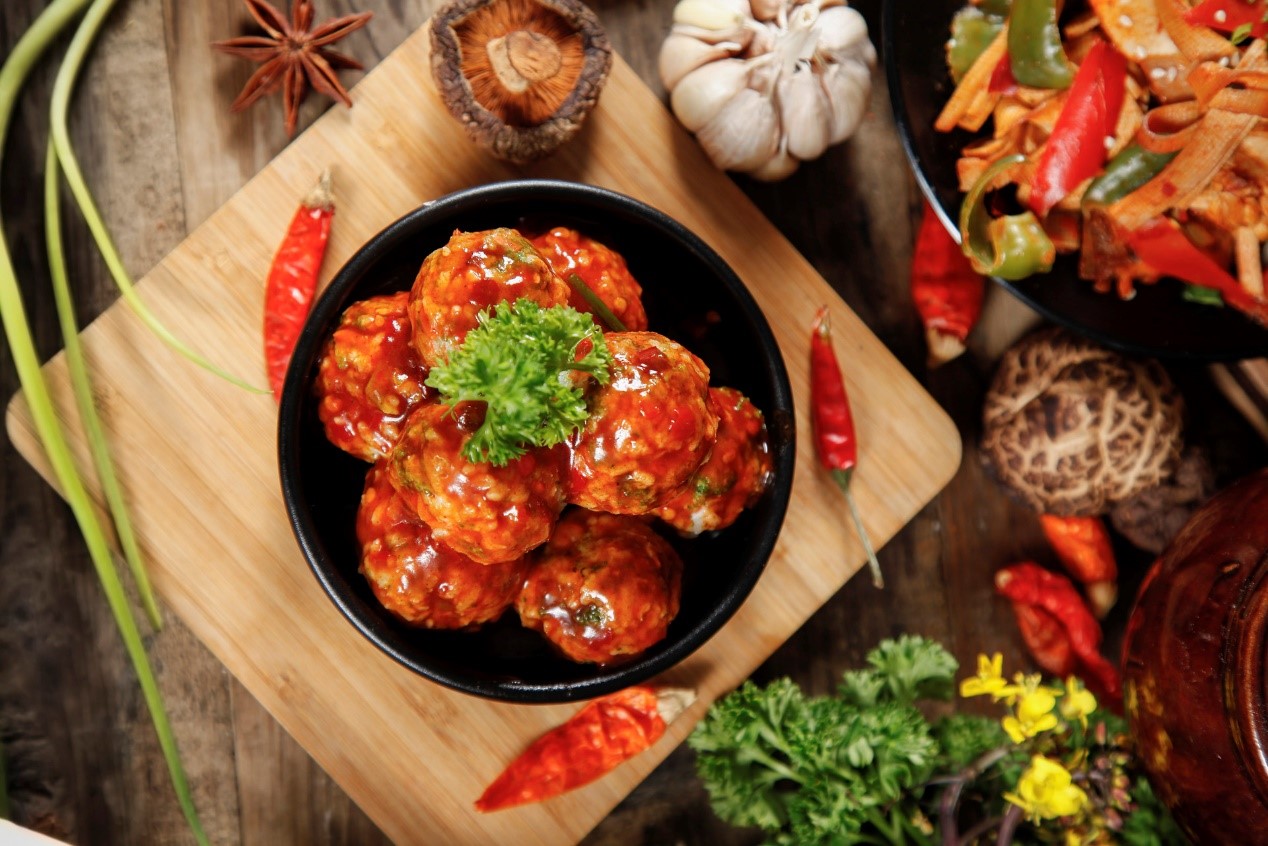
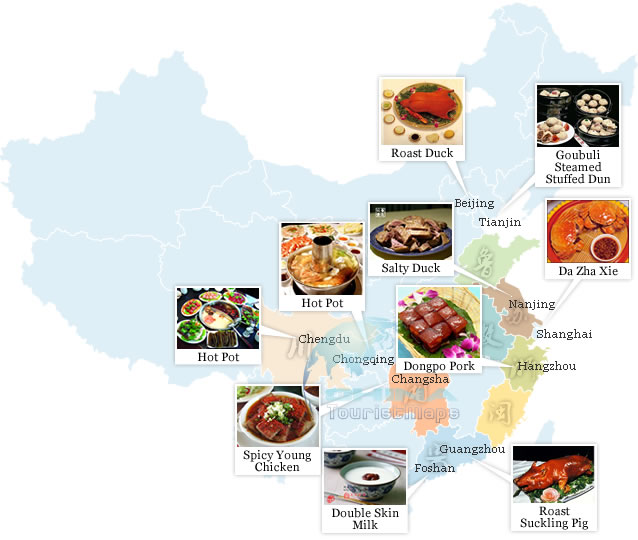
As we all know, China is a big country of catering culture. As for the number of dishes, the wide taste and the exquisite and complicated practices, it is the best in the world. Due to China’s vast territory and complex environment, there are obvious regional differences in food culture between the southeast and northwest.
For a long time, due to the influence of local environment, climate, products, customs and eating habits, various schools with local flavor have been formed. In China, Guangdong cuisine, Sichuan cuisine, Shandong cuisine, Huaiyang cuisine, Zhejiang cuisine, Fujian cuisine, Hunan cuisine and Anhui cuisine are widely recognized as “eight major cuisines”.
Guangdong cuisine (Yue Cai)
Guangdong cuisine, that is, the local flavor of Guangdong. In a narrow sense, Guangdong cuisine refers to Guangzhou cuisine, that is, Guangzhou cuisine.
Guangzhou cuisine here includes: Shun (DE), Nan (HAI), fan (Yu). Guangdong cuisine, also known as “Chaoyue cuisine” in a broad sense, is developed from Guangzhou cuisine (Shunde cuisine), Hakka cuisine and Chaozhou cuisine (Shanwei cuisine).
The three major cuisine types are different, among which Guangzhou cuisine and Dongjiang cuisine are similar. Guangdong cuisine is famous all over the world for its strict selection of materials, fine workmanship, combination of Chinese and Western food, fresh quality and delicious taste.
Crispy goose:
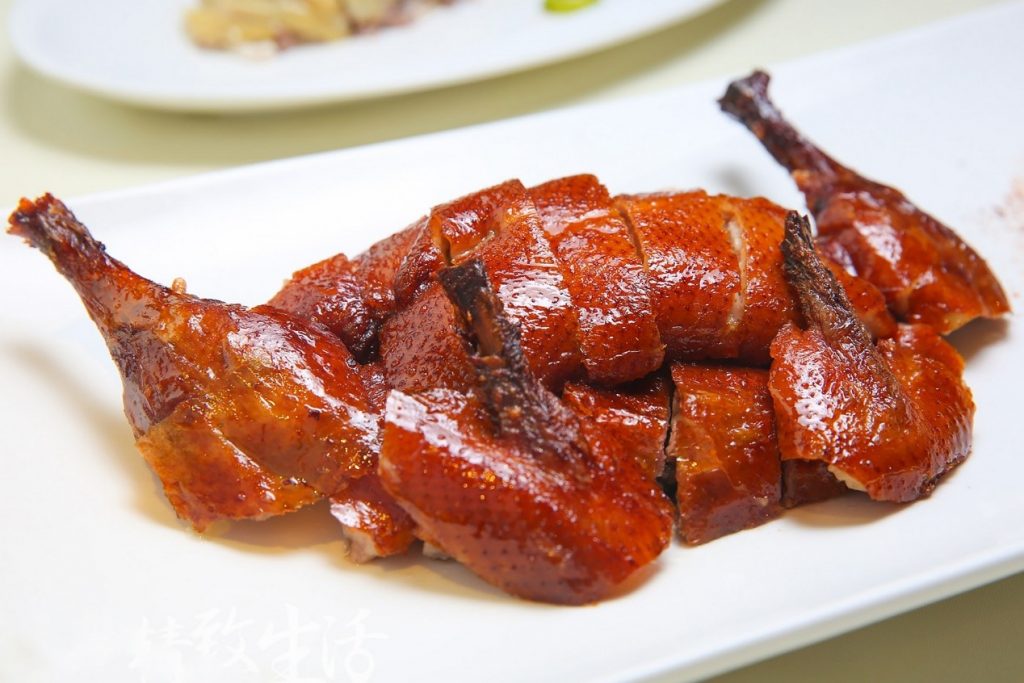
The formation and development of Guangdong cuisine is closely related to the geographical environment, economic conditions and customs of Guangdong. Guangdong is located in the subtropical zone, close to the South China Sea, with abundant rainfall, evergreen seasons and rich products. Therefore, Guangdong’s diet has always been unique.
As early as in the Western Han Dynasty, “Huainanzi spirit chapter” contains the delicacy and extensive selection of Guangdong cuisine, and it can be imagined that Guangdong’s people have been able to cook different peculiar smells with different cooking methods more than a thousand years ago. Before that, Han Yu, a poet of Tang Dynasty, was demoted to Chaozhou.
In his poems, he described that people in Chaozhou ate dozens of foreign things, such as horseshoe crab, snake, frog, octopus, and jiangyaozhu, and felt very bad. But by the time of the Southern Song Dynasty, seafood such as Octopus had become the best food in many local dishes.
Sliced Boiled Chicken:
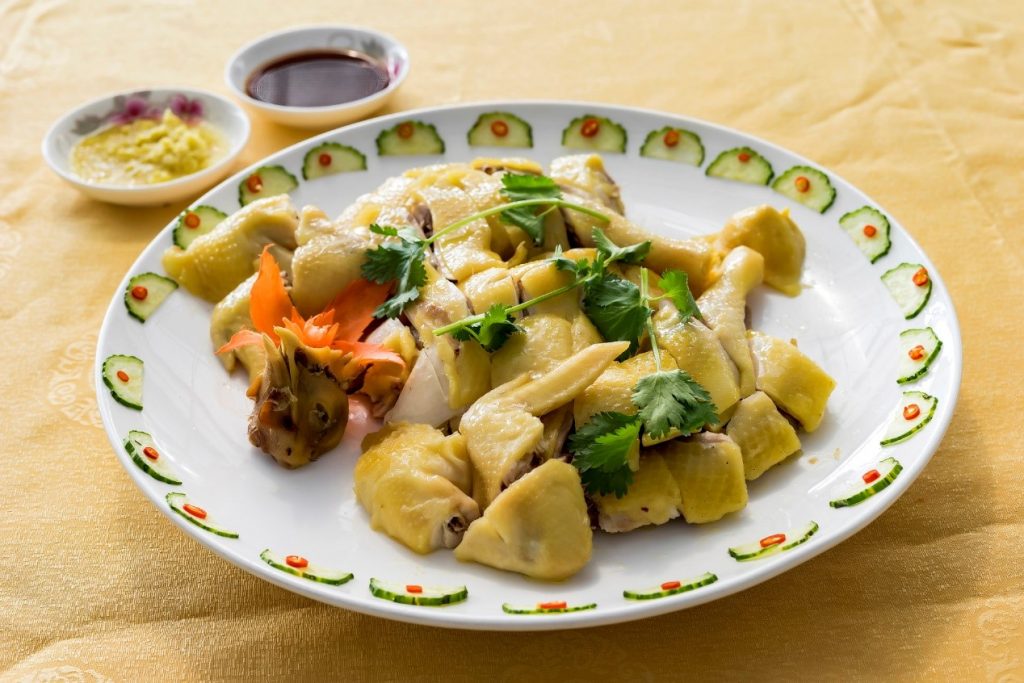
Sichuan cuisine (Chuan cai)
Sichuan cuisine is also a long history cuisine, its birthplace is ancient Ba and Shu. The formation of Sichuan cuisine is roughly between the unification of the first emperor of Qin and the Three Kingdoms. At that time, the political, economic and cultural center of Sichuan gradually moved to Chengdu.
At that time, no matter the raw materials for cooking, or the use of condiments, as well as the requirements of knife work, fire and professional cooking level, all have taken shape, and the prototype of the cuisine has already taken shape. Zhang Qian went to the western regions to introduce varieties of walnuts, peas, walnuts, soybeans, garlic, etc. in addition, he added cooking materials and seasonings for Sichuan cuisine.
Hot pot
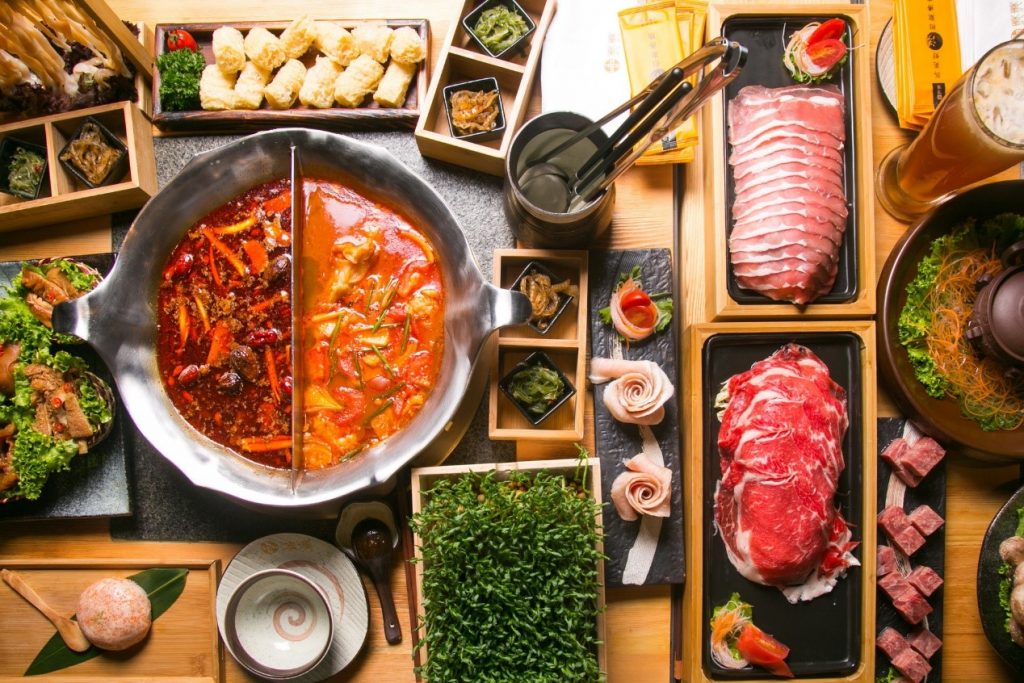
Mapo Tofu
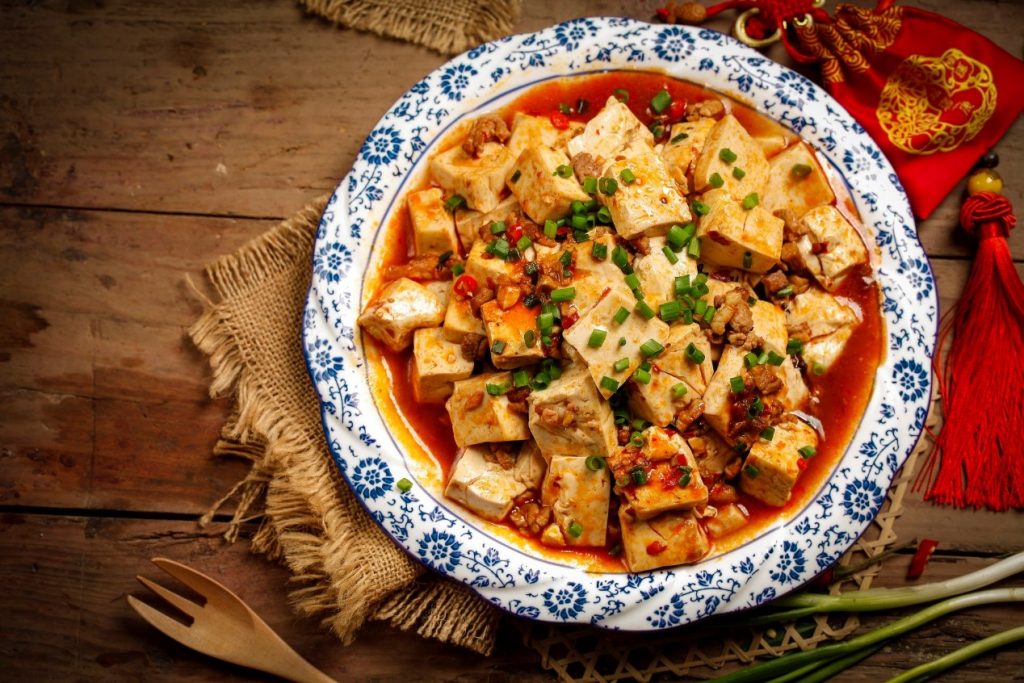
Pork Lungs in Chili Sauce:
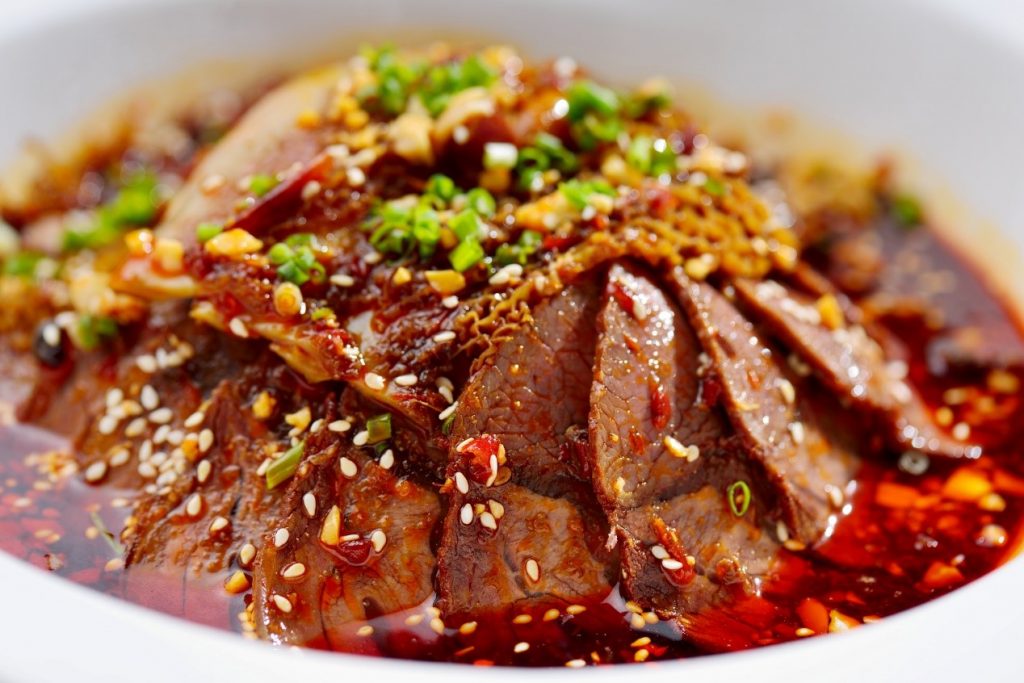
spicy chicken:
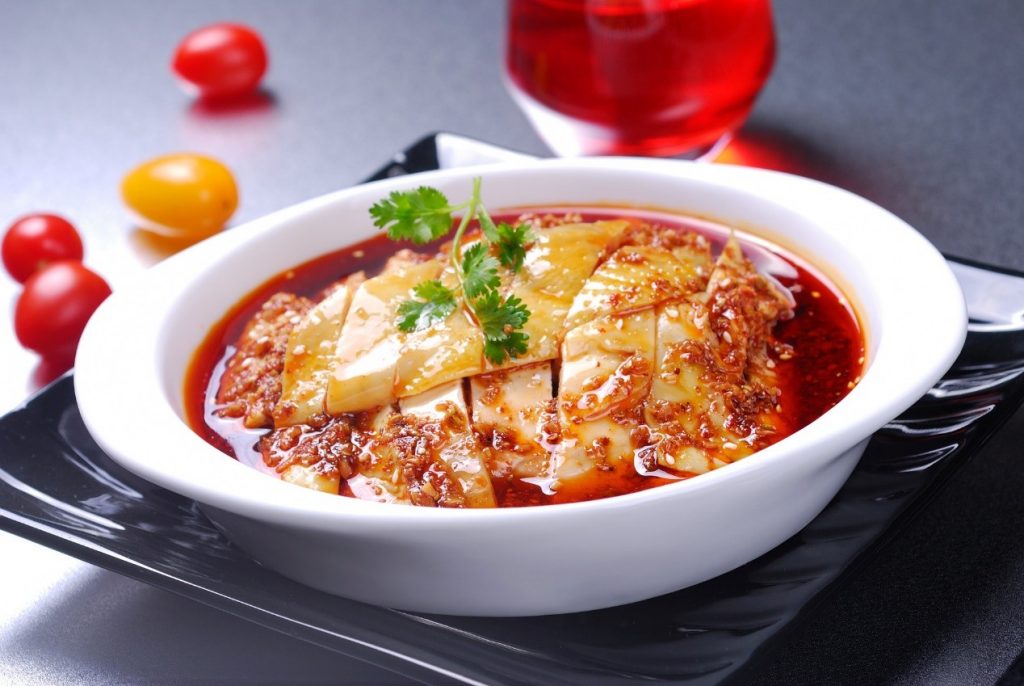
Modern Sichuan cuisine emerged in the Ming Dynasty and the Republic of China, and got innovative development after the founding of new China. Sichuan cuisine is mainly home-made dishes, supplemented by high-end dishes.
Most of the ingredients are daily dishes, and there is no lack of rare seafood. Its characteristics are that the red flavor emphasizes hemp, spicy, fresh and fragrant, and the white flavor is changeable, including sweet, bittern, strange and other flavors.
Representative dishes include fish flavored pork, boiled fish, boiled meat slices, spiced chicken slices, spicy chicken chops, Mapo Tofu, pork slices,and Dongpo pork. Other classic dishes include: stick chicken, pickled chicken feet, beef shadow, beef ribs, Liao ribs, spicy chicken, spicy shrimp, fried beef with peppers, Sichuan hot pot, spicy spicy fish, chestnut roast chicken, spicy chicken and so on.
Shandong cuisine (Lu cai)
Shandong cuisine, a Qilu flavor originated from Shandong Province, is the only self styled cuisine among the eight major cuisines in China (compared with Huaiyang, Sichuan, Guangdong and other influential cuisines), which has the longest history, the richest techniques, the highest difficulty and the most outstanding skills. A large number of Shandong chefs and dishes entered the Ming and Qing Dynasties, the imperial court further sublimates the style and characteristics of Shandong cuisine, which is elegant, moderate and healthy.
Braised Intestines in Brown Sauce
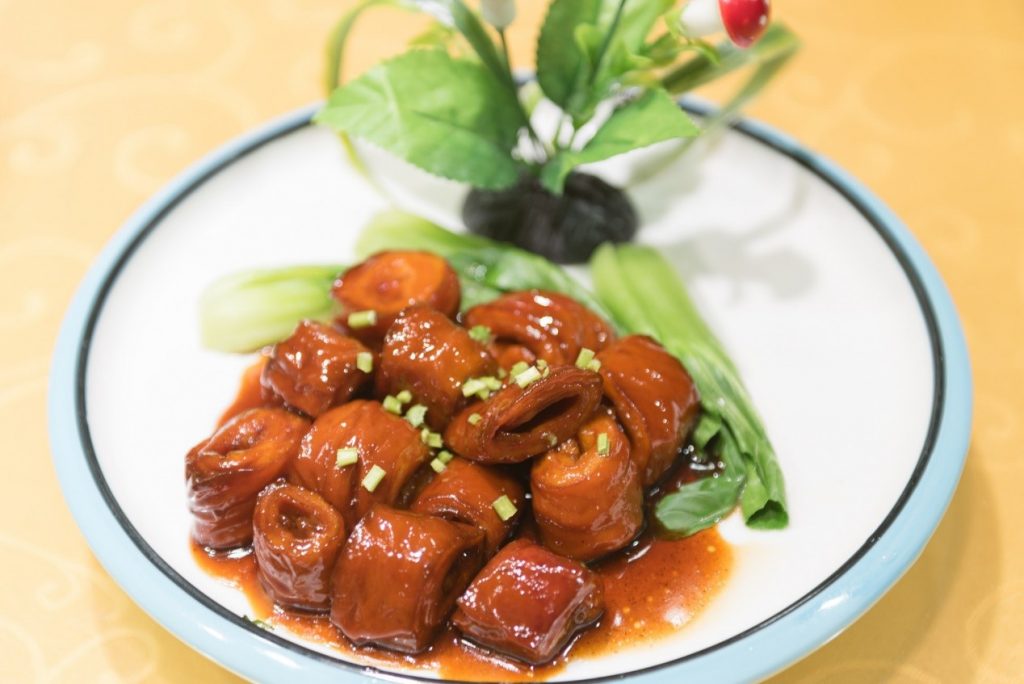
There are more than 30 cooking techniques commonly used in Shandong cuisine, especially the unique and specialized ones. The explosion method stresses quick fire and quick fry; the pickling technique is the original one of Shandong cuisine, the raw material is pickled and sticky powder, the oil is fried on both sides, and the juice is collected at low temperature; the finished products of the pickling method are neatly shaped, with strong taste, rotten quality and thick juice.
The formation and development of Shandong cuisine is related to the cultural history, geographical environment, economic conditions and customs of Shandong. Shandong cuisine is also good at making soup. Soup is different from “clear soup” and “milk soup”. Soup is different from “clear soup” and “milk soup”. Dozens of dishes made of them are mostly listed as delicacies of high-level banquet.
Sweat and sour carp
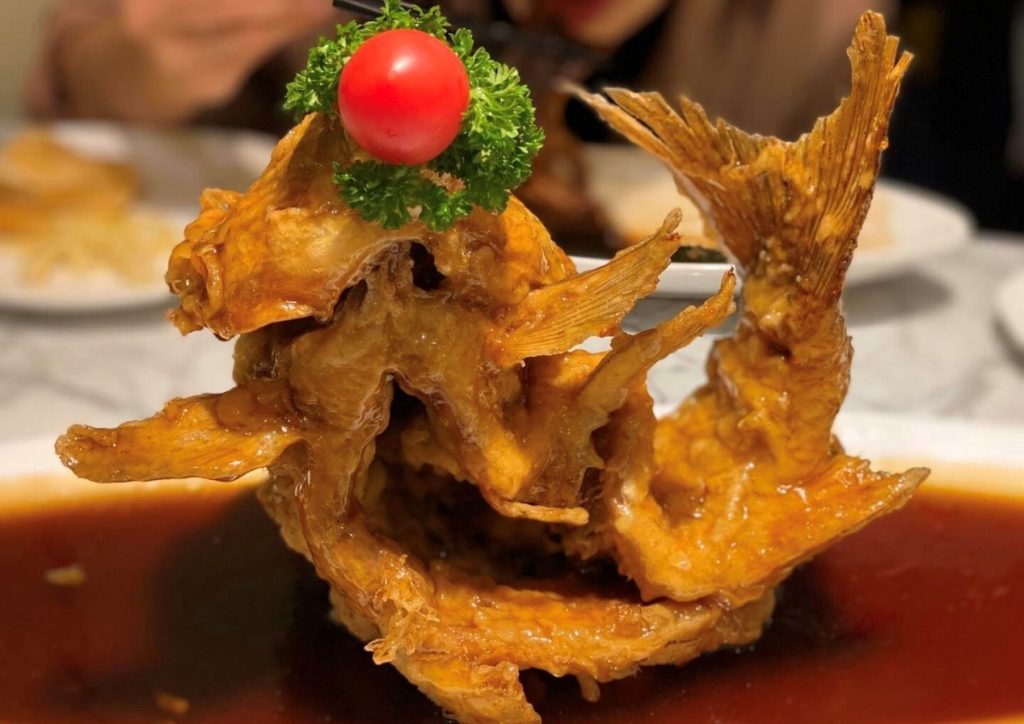
There is something unique about cooking seafood. The cooking of sea treasures and small seafood is unique. In Shandong, whether it’s ginseng, wings, swallow, shellfish, scales, oysters, shrimps and crabs, cooked by local chefs, they can become wonderful and delicious dishes.
“Oil fried double flowers”, “braised conch”, “fried oyster yellow” cooked with small seafood, and “crab roe and shark’s fin”, “dried scallop with Hydrangea” made from sea treasures are all unique seafood treasures.
Huaiyang cuisine ( Huai yang cai)
crab large meatball
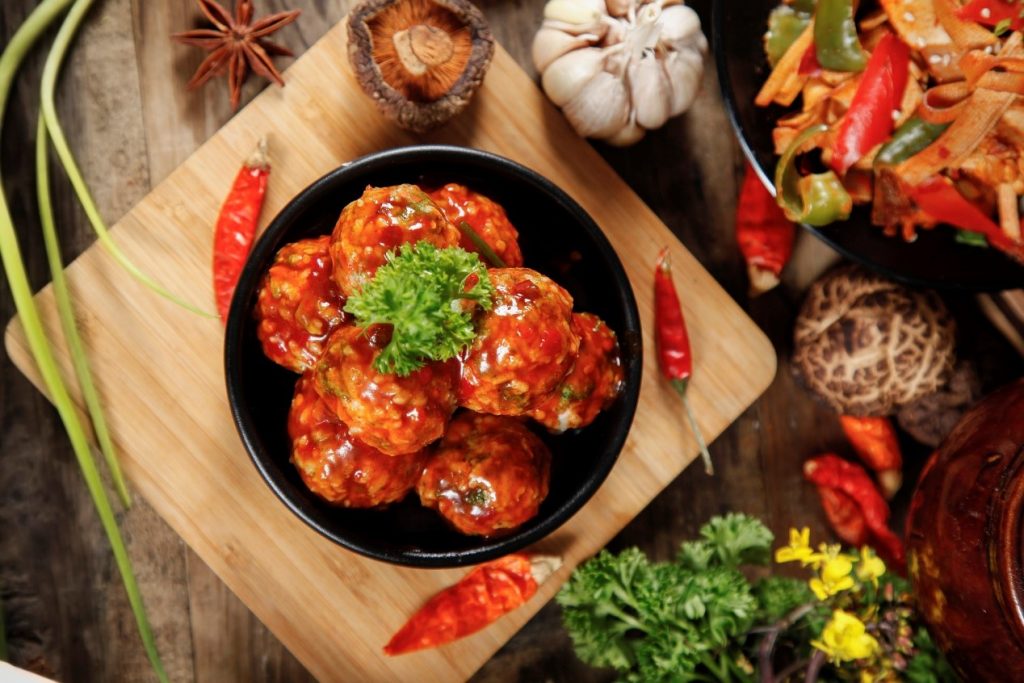
Braised Shredded Chicken with Ham and Dried Tofu
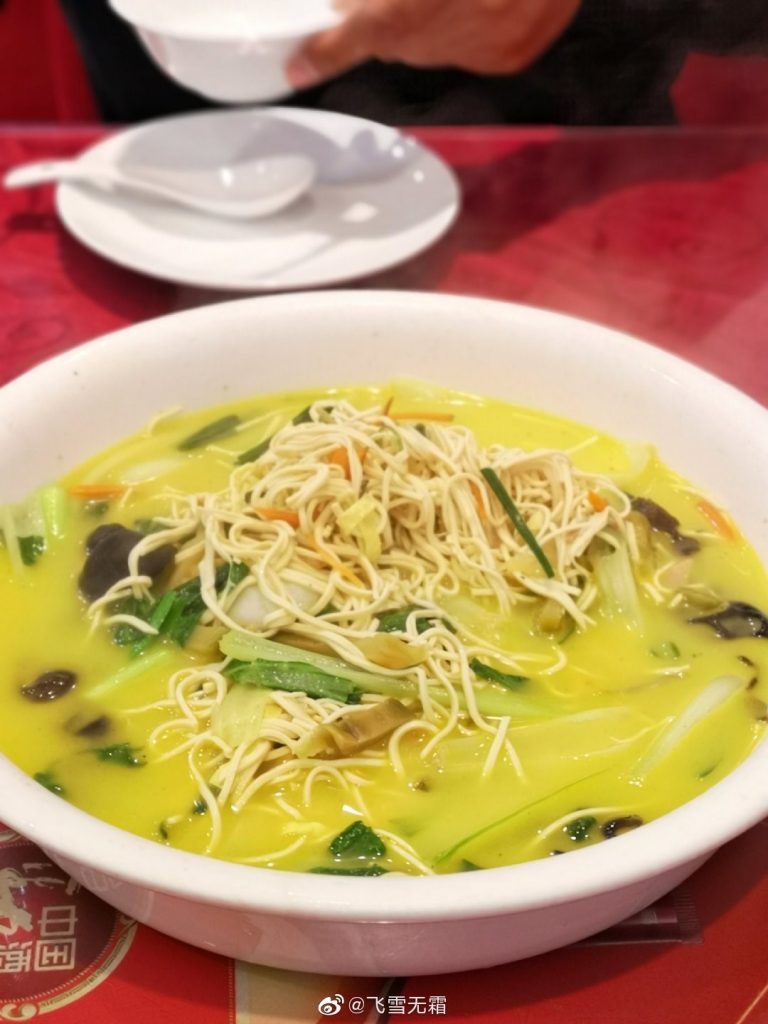
Huaiyang cuisine is one of the four traditional Chinese cuisines, originated in Yangzhou and Huai’an. The cuisine is full of Huaihe and Yangzhou characteristics. Most of the raw materials are aquatic products. Most of Huaiyang cuisines are based on river and river delicacies in the Jianghu, supported by top-notch cooking skills, with the original flavor and the original color as the best. Yangzhou and Huai’an are famous historical and cultural cities.
Huaiyang cuisine refers to Huaiyang regional cuisine centered on Yangzhou Prefecture and Huai’an Prefecture, formed in Yangzhou, Huai’an and other regions. Huaiyang cuisine began in the spring and Autumn period, flourished in the Sui and Tang Dynasties, and flourished in the Ming and Qing Dynasties.
It is known as “the best taste in the southeast, the most beautiful in the world”. Famous dishes include stewed crab large meatball, stewed dried silk, three sets of duck, crystal meat, etc. Its dishes are delicate and elegant.
Zhejiang cuisine ( Zhe cai)
Zhejiang cuisine has a long history. Zhejiang cuisine is rich in varieties, small and exquisite in style, delicious, smooth, crisp, soft and fresh. It is characterized by its clearness, fragrance, crispness, tenderness, freshness, which plays an important role in many local flavors in China. Zhejiang cuisine mainly consists of four schools, Hangzhou, Ningbo, Shaoxing and Wenzhou, each with strong local characteristics. Zhejiang cuisine is based on the above four schools.
As a whole, it has relatively obvious characteristics and styles, but also has four common characteristics: exquisite selection of materials, unique cooking, focusing on the flavor, and fine production.
Steamed Grass Carp in Vinegar Gravy
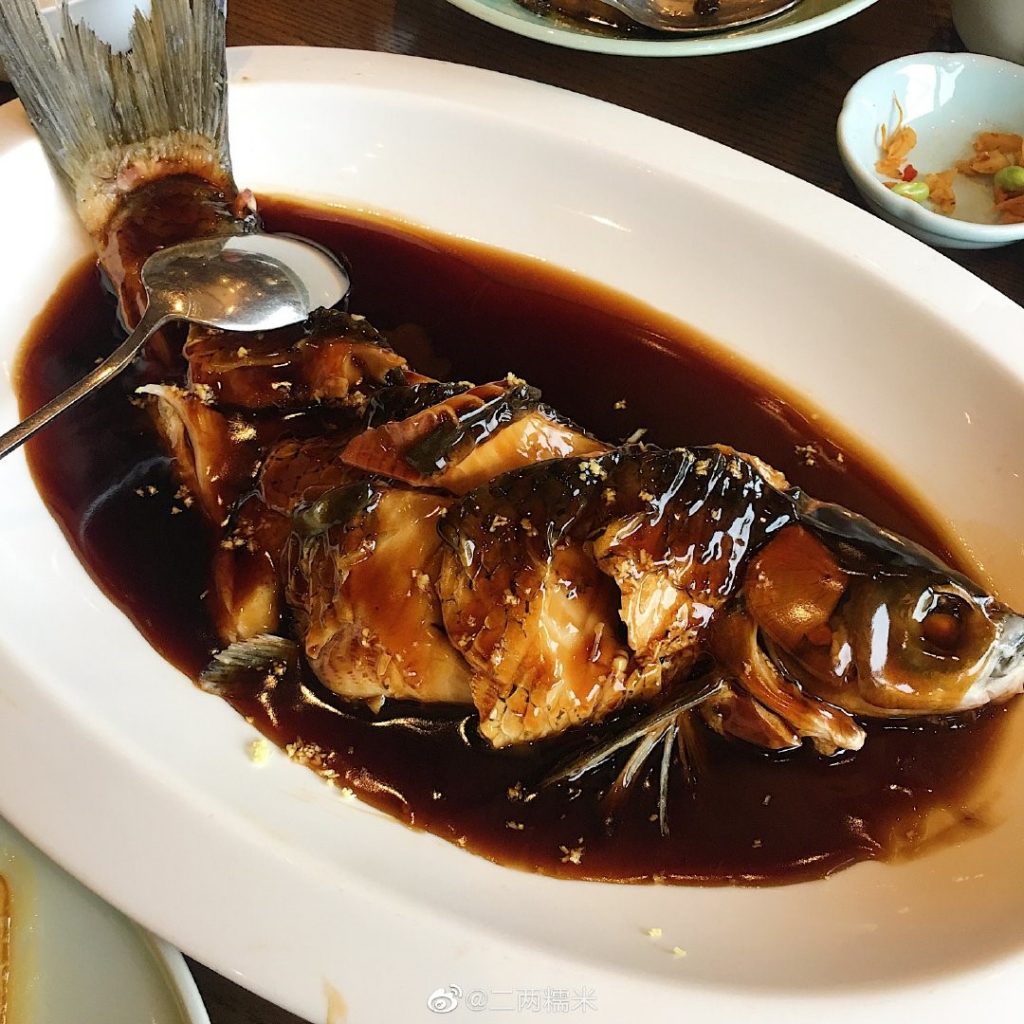
Stir-fried Shrimps with Longjing Tea Leaves
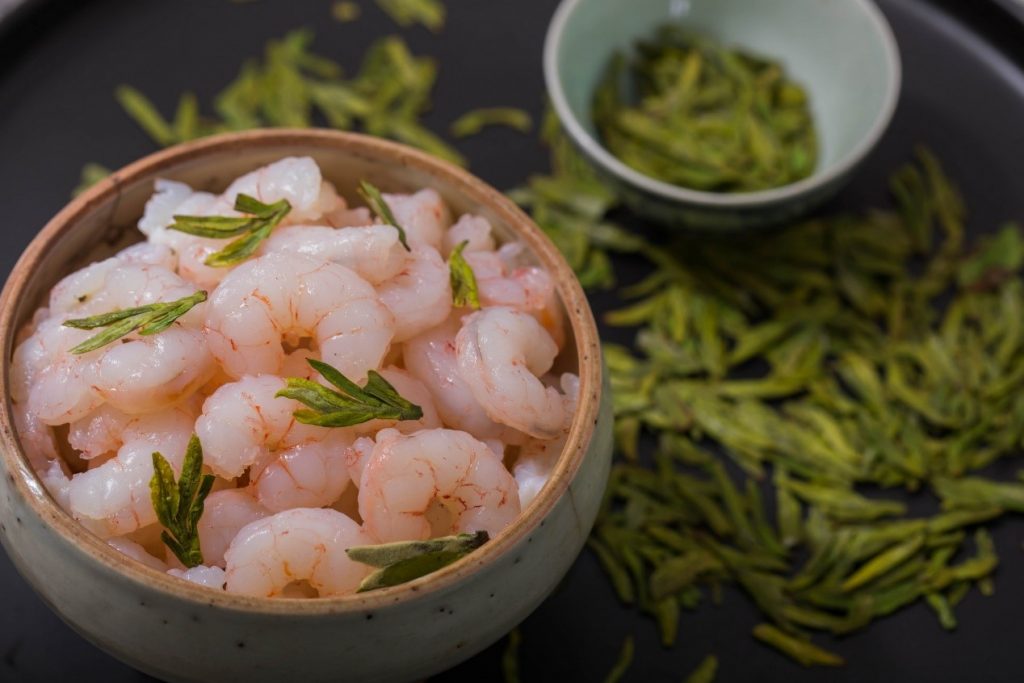
Zhejiang cuisine pays attention to varieties and seasonal seasons to fully reflect the tenderness and crispness of raw materials. The seafood, fruits and vegetables used are all based on seasons. Poultry and livestock used are mostly specialty products, which fully embodies the principle of “four season sequence” for selection of Zhejiang cuisine.
Fujian cuisine (Min Cai)
Fujian cuisine is the abbreviation of Fujian cuisine, originated in Minhou County, Fujian Province. It is represented by dishes from Fuzhou, Quanzhou, Xiamen and other places. It is one of the main cuisines in Chinese cuisine, and plays an important role in the treasure house of Chinese cuisine culture.
Litchi meat
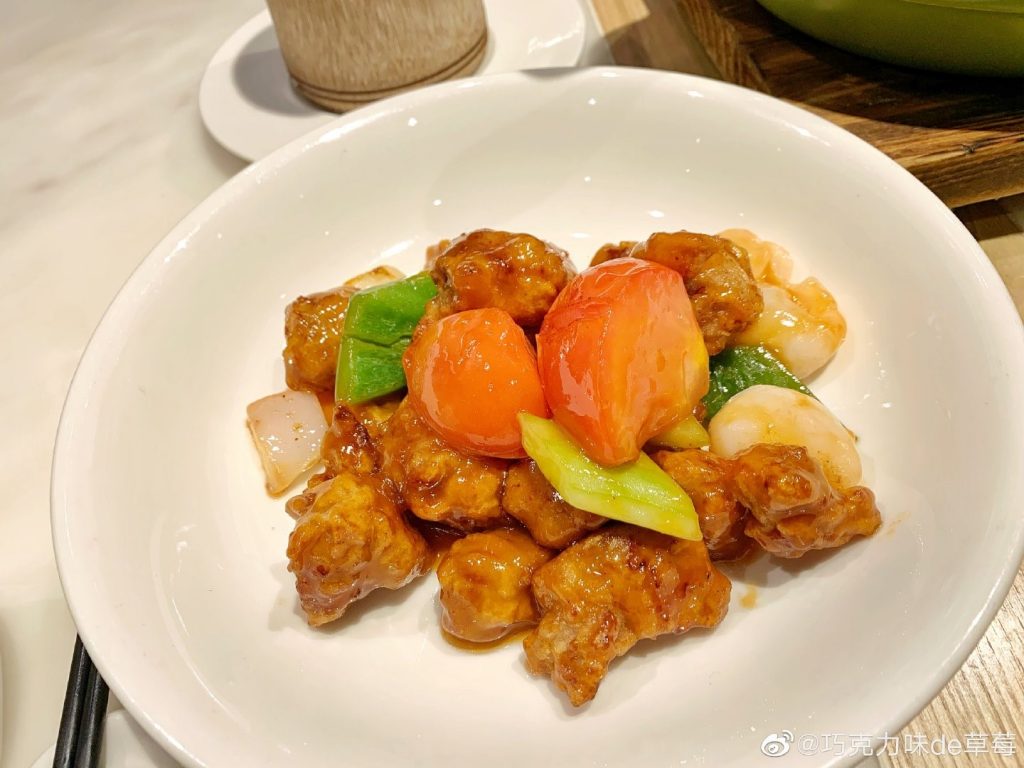
Steamed Abalone with Shark’s Fin and Fish Maw in Broth
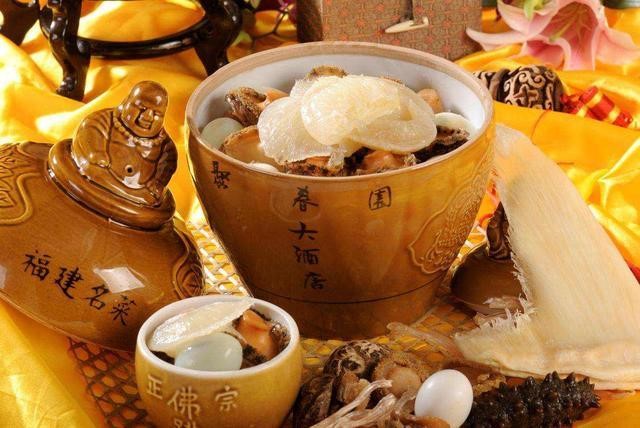
Fujian cuisine is mainly made of seafood and mountain delicacies. Due to the geographical situation of Fujian, it is mountainous in the north and sea in the south. The vast mountainous area is rich in mushrooms, bamboo shoots, tremella, lotus seeds, stone scales, eels, turtles and other mountain delicacies; the long shallow sea beach rich in fish, shrimp, mussels, sturgeons and other seafood products all year.
In plain and hilly areas, rice, sugar, vegetables and fruits are well-known at home and abroad. The products given by mountains and seas provide Fujian cuisine with rich raw materials.
Hunan cuisine (Xiang Cai)
Hunan cuisine, is also known as Benwei cuisine in Changsha. It is one of the eight major cuisines with a long history in China. It has been formed as early as Han Dynasty. The main local flavor is Xiangjiang River Basin, Dongting Lake area and Xiangxi mountain area.
Hunan cuisine is delicately made, with a wide range of materials, varied tastes and various varieties. It is rich in color, rich in oil, and practical in taste. It pays attention to spicy, fresh and soft in taste. It is famous for simmering, stewing, waxing, steaming and frying.
Steamed Fish Head with Diced Hot Red Peppers
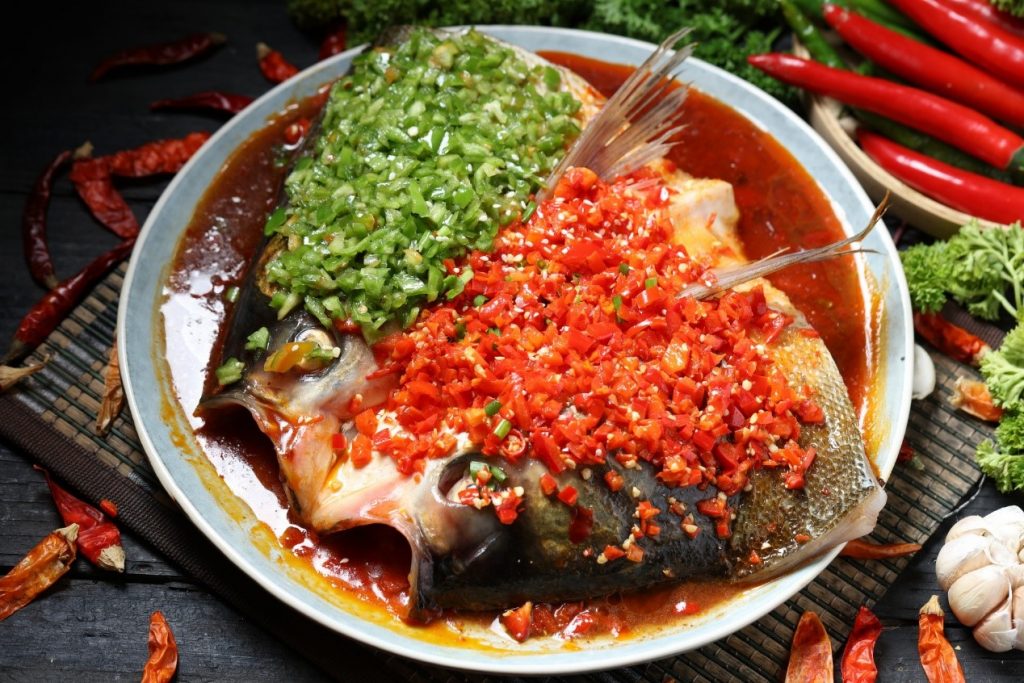
Due to the geographical location, the climate in Hunan is mild and humid, so people prefer to eat chili peppers to refresh themselves and get rid of the humidity. Pickles as seasoning, coupled with chili cooked dishes, appetizer and refreshing, favored by a unique local diet customs.
Yongzhou blood duck
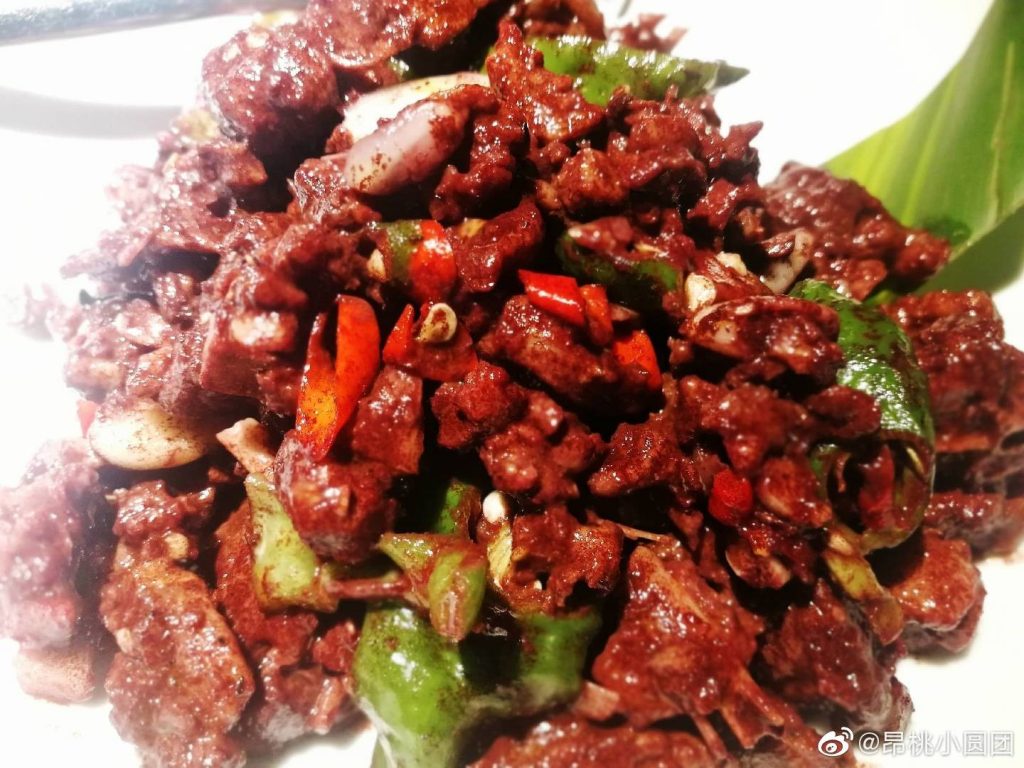
Hunan cuisine has a wide selection of ingredients. Hunan is rich in products, known as “land of fish and rice”. Superior natural conditions and rich products provide a continuous supply of material for Hunan cuisine. All the birds in the air, the animals on the ground, the fish in the water and the game in the mountains are the best raw materials for Hunan cuisine. As for all kinds of fruits, seasonal vegetables and local specialties, they are inexhaustible and inexhaustible dietary resources.
Huizhou cuisine (Hui Cai)
Huizhou cuisine is one of the eight major cuisines in China and the local characteristics of ancient Huizhou. Its unique geographical and cultural environment endows it with unique flavor. Due to the rise of Huizhou merchants in the Ming and Qing Dynasties, this local flavor gradually entered the market, spread in the areas of Jiangsu, Zhejiang, Jiangxi, Fujian, Shanghai, Hubei and the middle and lower reaches of the Yangtze River, and had a wide influence.
At one time, it was the top of the eight cuisines in the Ming and Qing Dynasties. According to the Chinese Huizhou cuisine standard published in 2009, Huizhou cuisine is officially identified as the five flavors of Wannan cuisine, Wanjiang cuisine, Hefei cuisine, Huainan cuisine and Wanbei cuisine, and the general name of Yanjiang cuisine, Yanhuai cuisine and Wannan cuisine.
Huizhou mandarin fish
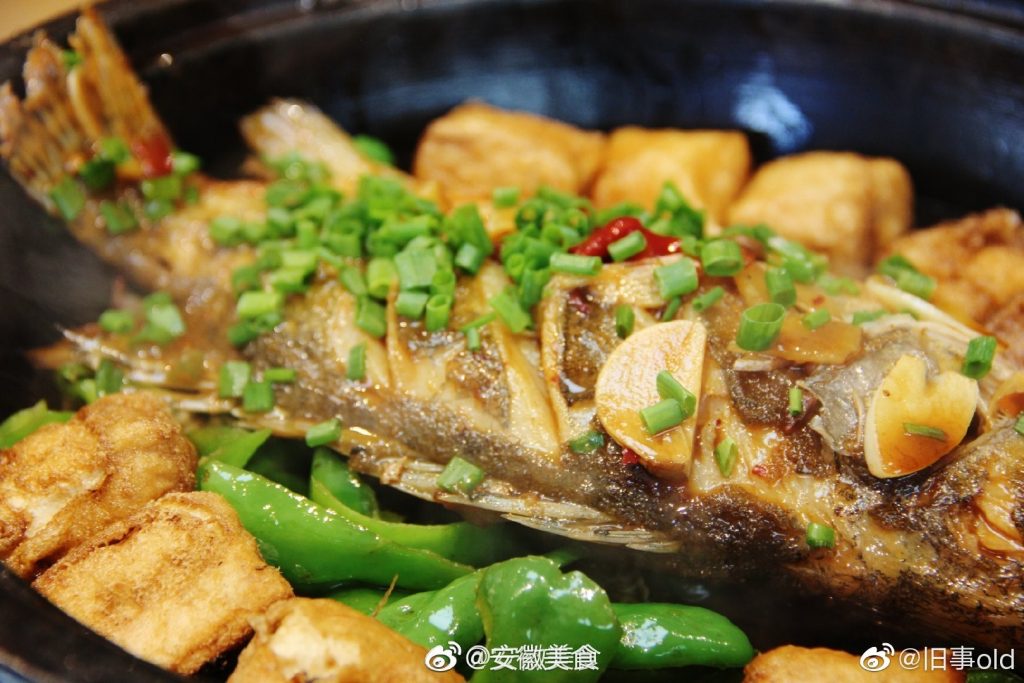
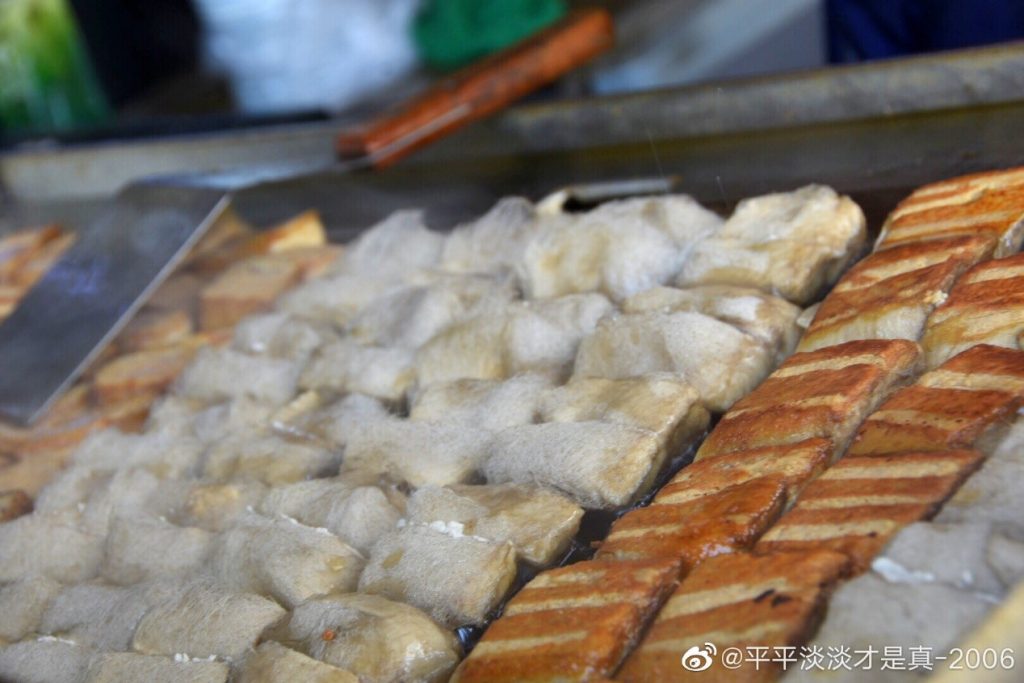
Travel with China Expedition Tours and Taste Authentic Chinese Cuisines, If you want to try china’s authentic food, our tours can take you to authentic local restaurants as you tour around China. See our most popular food tour as follow:
Low Season & Early Bird Promotions!
15% off to book any of our China Gourmet Tours!
Booking Time:from now on till March 31, 2020
Travel Time:from now on till December 31, 2020
Our all-inclusive China Gourmet Tours carefully select typical local cuisines of different cities for you to taste different Chinese food as much as possible! Come with an appetite and dine with us like a local in China in the coming year of 2020.
√ Most popular destinations in China
√ No repeated cuisines during the tour
√ Healthy and mouthwatering food
√ You not only gorge yourself, but cook the cuisine yourself
√ Learn the cultural stories behind the cuisine
√ Private and exclusive
√ Less people, less crowded!
√ Lower price!!
Facebook Comments